The Only 4 Knives You Need In Your Kitchen, According To Experts
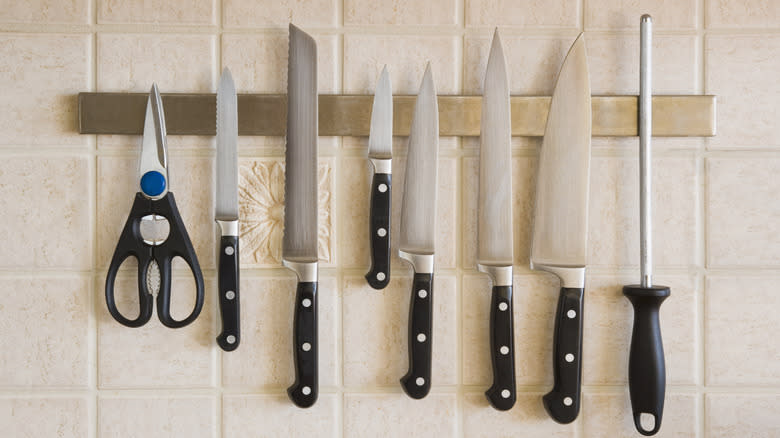
Do you really need to purchase an entire knife set? If you're a budding home chef or moving into your own place for the first time, your kitchen might look a little bare. When it's time to buy cooking tools, it's easy to feel a bit confused as there are so many different options. Sometimes kitchen knives come in large sets along with a storage block, so you end up with knives you never use. At other retailers, you might need to mix and match options to create a customized grouping of your choosing, so you can make sure you only have what you need.
The question is, how do you know what to pick out? If you're buying your own knives for the first time and still learning kitchen knife hacks, you likely don't need a complete set of knives. Or, maybe you do, depending on what you plan on spending your time cooking. To make things easier for you, we asked the experts for their opinions to discover the four types of knives you should have in your kitchen and the eight you don't need.
Read more: The Best Kitchen Gadgets You Can Buy
Everyone Needs A Chef's Knife
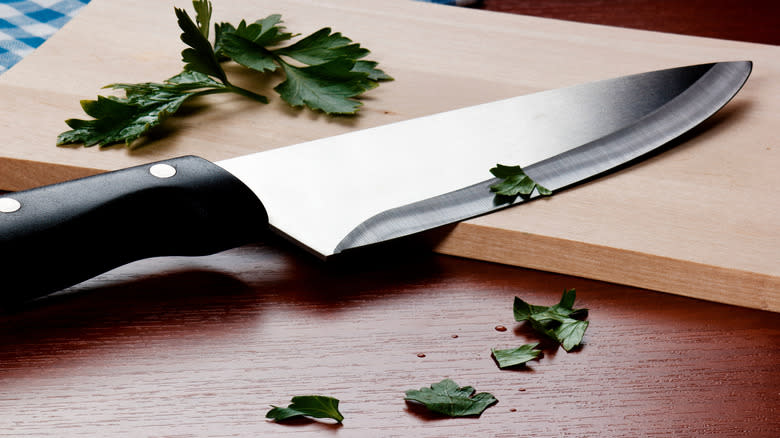
One thing is for certain — this knife, sometimes simply called a kitchen knife, is the one that you have to have. "This is what I can hail [as] an 'all-purpose' knife, and it's suitable for all works (from chopping, slicing, and dicing, to mincing a wide variety of ingredients)," Daniel T., CEO of Ready-Home.com told Daily Meal in an exclusive interview. "This can even work for peeling, trimming, and slicing small fruits and vegetables (like a paring knife). When used and forged properly, it can also function as a Santoku knife for thinner slices or even filleting."
Maggie Turansky, founder and head recipe developer for No Frills Kitchen, agreed. "A chef's knife is the absolute essential knife to have and I use it for the majority of my kitchen tasks," she said. "I use it for all of my prep work for a meal unless I require a bit more control for a delicate task." These two experts aren't alone in their praises of the chef's knife, as Rena Awada, owner and head chef of Healthy Fitness Meals told us, "I think a chef's knife is an essential tool for any kitchen, whether you're a professional chef or just someone who loves to cook at home." So when you're stocking your first kitchen, make sure you start with at least a chef's knife. Most other options can come later, even if you will eventually need them.
A Paring Knife Should Be In Every Kitchen
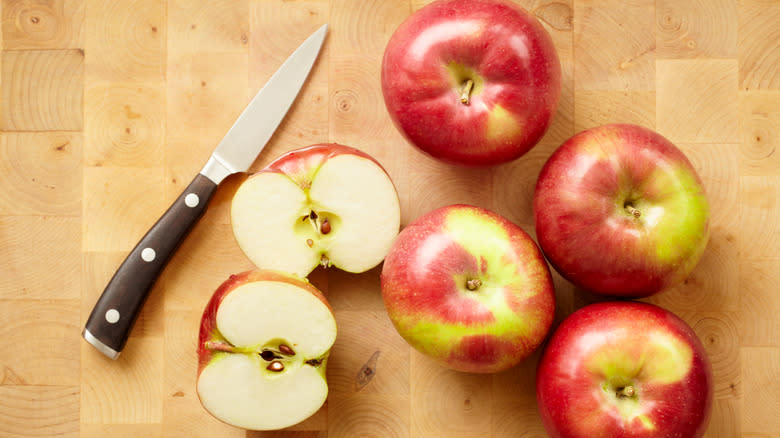
Another essential to buy towards the beginning of furnishing your kitchen is a paring knife. Maggie Turansky considers it a must-have. "I, personally, don't think that buying a knife set with countless different knives for different purposes is a worthwhile purchase," she told Daily Meal. "In general, I believe there are really only a few knives that are absolutely necessary in a kitchen."
Because of its flexibility and ease of use, the paring knife easily makes her list. "I use a paring knife when doing simple tasks like cutting fruit," she said. "If you get a knife with a slightly longer, slightly flexible blade (I like the Victorinox paring knife with a 3-inch blade), it can also be used in place of a boning knife — saving you both space and money!" These knives are small, easy to handle, and great for when you just need to chop something quite quickly, making it an essential in any kitchen.
Steak Knives Make Dinnertime So Much Easier
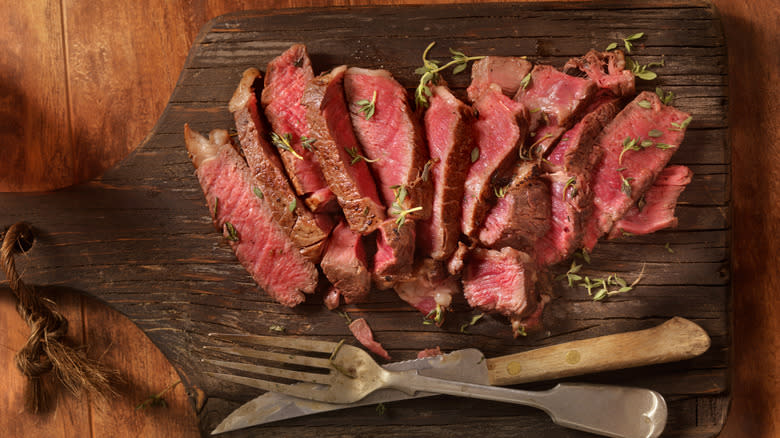
If you eat meat, you need to have steak knives in your kitchen. Nothing is worse than trying to cut through a steak with a regular kitchen knife. Even if the meat is cooked perfectly, non-specialized knives never seem to be sharp enough to get through the grain in the meat, making you work way harder than you need to for your dinner. "These are ideal for cutting through cooked meat, enhancing the eating experience at the table," Maggie Turansky told us.
Something to keep in mind, though, is that these knives don't live in your knife block, but typically in the drawer with the rest of your silverware instead. This is because you'd buy them in sets of four or more. "They are primarily used at the dining table rather than for cooking or prep work and are worth having if you regularly serve meat dishes," Turansky continued. Even though "steak" is in their names these knives also work great with chicken, pork, and turkey, too.
Bread Knives Are Unique And Irreplaceable
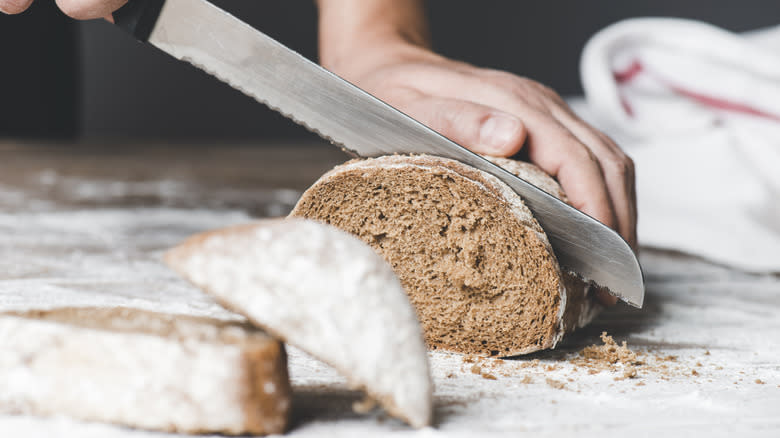
When building your core knife set, our experts agree that the bread knife is the final "must-have" because it does a job that chef's, paring, and streak knives simply cannot do: Cutting bread without squashing it. "The reason why [a] Chef's Knife can't is because you need to press it to work, and why would someone press bread?" Daniel T. shared, saying about a bread knife that "its serrated blade is designed to slice through bread and other baked goods without crushing or tearing them." We've all been there — turning our bagels into flatbread while trying to get the two halves apart or ruining a fluffy roll with our vigor.
"Its serrated blade easily cuts through even the toughest crusts without squishing or tearing the soft interior of the bread. It can also be used for other tasks like slicing cakes and pastries," Rena Awada noted. "I think this is perfect for everyday use, especially if you love a good loaf of bread for breakfast or as a side with dinner."
The bread knife is also the final addition to Maggie Turansky's holy trinity of kitchen knives, as she shares it can be used for more than just bread. "A serrated knife (another name for a bread knife) is essential for slicing through crusty bread or even thinly slicing ripe tomatoes!"
Santoku Knives Can Replace Chef's Knives For Some
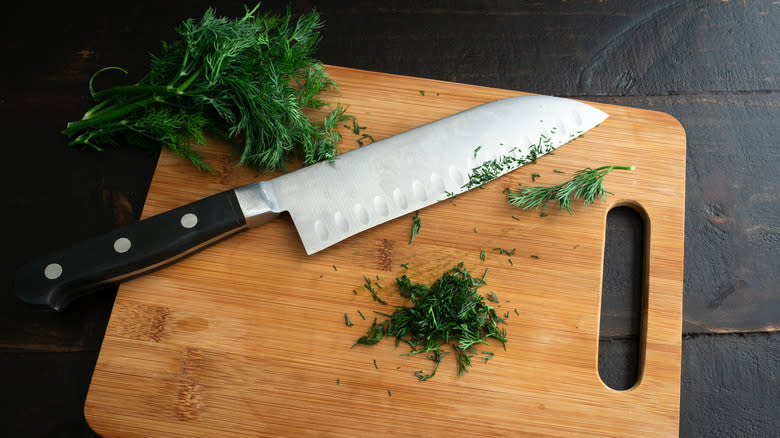
The Santoku knife is the first of the optional knives to have in your kitchen. Depending on how you cook, it might be more useful to you than a chef's knife. "Known for its sharpness and precision, the Santoku knife is great for slicing, dicing, and mincing," Jessica Randhawa head chef and creator of The Forked Spoon told Daily Meal in an exclusive interview. "A hollow edge on a Santoku knife features small indentations along the blade that create air pockets to prevent food from sticking, making slicing smoother and faster."
When asked about any cons of the knife, Randhawa couldn't think of any. "Just keep a good knife sharpener with a 10 to 15-degree angle on hand to maintain a precise edge," she said. "It's better than the chef's knife. This is the most useful all-purpose knife of all time and my go-to for just about everything. Having both a 7-inch and a 5-inch is a great idea." The Santoku is a bit lighter than a chef's knife if you find yourself having trouble handling the latter. It's also favored by Japanese and Asian cuisine specialists, as it's well-suited for slicing and chopping techniques.
A Nakiri Knife Is A Great Option For Vegetarians
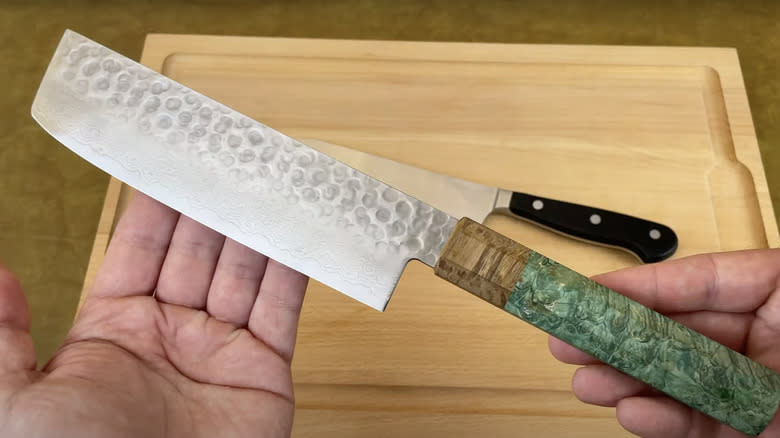
"A Nakiri knife is a Japanese-style vegetable knife with a straight edge and a squared-off tip. It's specifically designed for precision slicing and chopping of vegetables, making it a great tool for meal prep or creating intricate vegetable dishes," Rena Awada explained. "Depending on the quality, you can also use it to cut through boneless proteins like fish or tofu. I think this would be great to have for those who regularly cook vegetarian or plant-based meals." So if you aren't a vegetarian or feel that chopping vegetables with a chef's knife works fine, you can skip this one.
If you do go for it, Awada mentions that the knife is "available in different sizes and styles to suit individual preferences" so if you have smaller hands or less storage capacity, you can choose the option that works best for you. The main drawback is that "higher-quality Nakiri knives can be expensive." They also are "not as versatile as a chef's knife," as the Nakiri is specialized for vegetables, fish, and tofu, rather than all foods.
Meat Cleavers Aren't That Useful For Most People
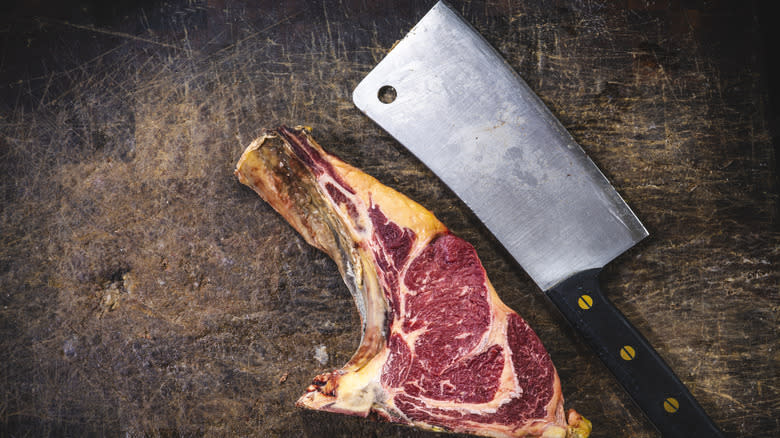
The pros of having a meat cleaver in your kitchen are it is "excellent for chopping through tough meat and bone with its heavy, durable blade," Jessica Randhawa shared. If you don't consider yourself a bit of a butcher, though, you don't really need to have one around. "Cleavers are overkill for those who don't need its heavy-duty capabilities," she continued. "It is unnecessary for most kitchens unless you frequently need to chop through large cuts of meat and bone."
If you or someone in your family enjoys hunting and needs to break down hog or deer carcasses, having a cleaver could be quite useful. If you prefer to purchase meat like ribs intact and break it down yourself as well, then you might also need one. But if this doesn't sound like you, go ahead and skip it. Plus, to use a meat cleaver safely, you also need a certain amount of space, per Randhawa, so if you have a smaller kitchen, it's not worth the risk.
Home Chefs Should Have Boning Knives
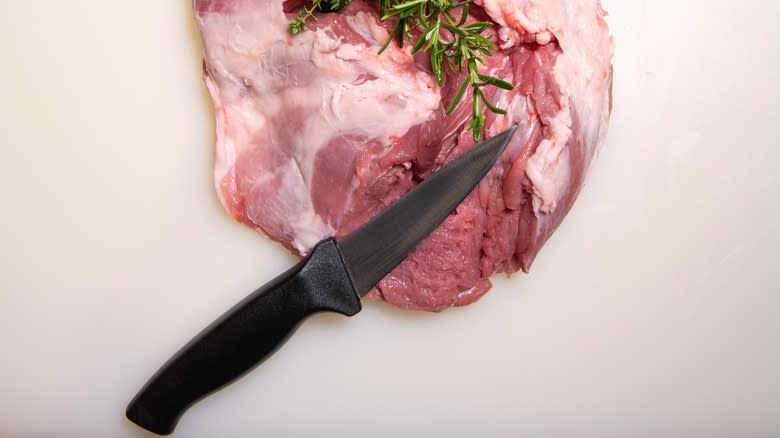
A boning knife is just what it sounds like. It's a helpful tool in the kitchen that's made specifically for getting rid of those smaller pesky bones from meat, chicken, and fish. It has a slim, sharp blade that's usually between 5 to 7 inches long, with a pointy tip, so you can easily work around bones and joints. But having one isn't necessary, depending on the kind of foods you typically prepare at home. "It's worth it for those who frequently cook meat and fish, but it's not necessary for everyone," Jessica Randhawa explained. "Its thin, flexible blade is ideal for removing meat from bones and making precise cuts."
There is just one glaring downside to a boning knife, however. It can only do one job, so it might just take up more space than it's worth in your kitchen. "[It's] not versatile and mostly limited to meat prep tasks," Randhawa continued. If you're a big fish eater, grab one to make sure you don't have extra crunch to your salmon — but otherwise, you can likely skip this knife.
A Carving Knife Can Make The Holidays Easier
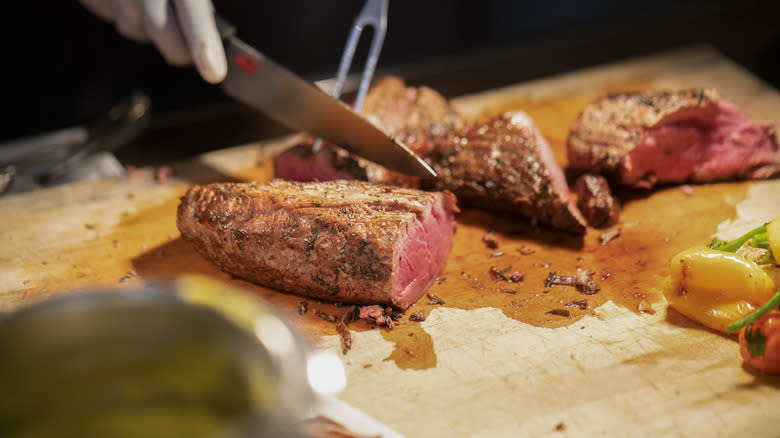
When it's time to serve the turkey on Thanksgiving or Christmas, it can be nice to have a carving knife around. These knives are "long and thin and designed to slice thin cuts of meat, such as whole turkeys, large hams, and beef roasts cleanly and efficiently," Jessica Randhawa told the DailyMeal. "They are useful during holidays or if you often roast meat; otherwise, it is not essential. It has limited use outside of slicing cooked meats."
In most cases, it makes sense if one person in a family or friend group has a carving knife. If at least one attendee at the gathering can carve the meat at dinner time, you should be all set. However, if that is likely to be you, then you might as well add one to your arsenal. In this case, "having a hollow-edge version is excellent," Randhawa advised. The hollow edges keep the meat from sticking to the knife, leading to a smoother cut and happier diners.
Fillet Knives Work For Frequent Fish Eaters
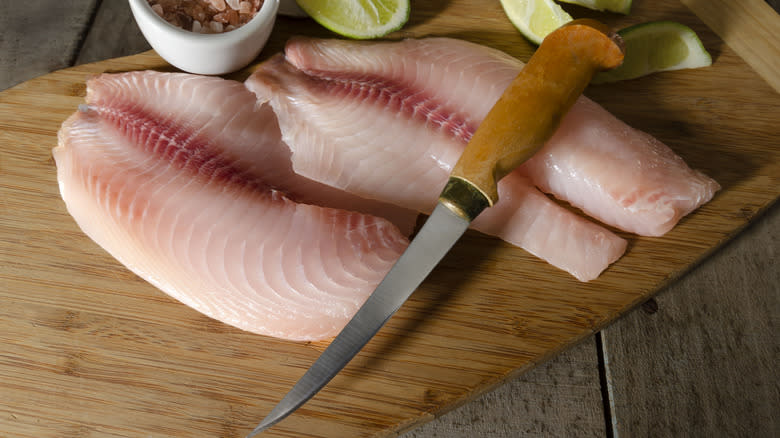
You might think boning knives and fillet knives are the same, but they are just different enough that frequent meat eaters should carefully consider whether they need both. A boning knife has a narrow, pointed blade used for removing bones with precision and minimal waste. On the other hand, a fillet knife is specifically designed for filleting fish with a thin and flexible blade. Because it is flexible, it contours to the shape of the fish, making it easier to remove skin and bones while maximizing your meat yield. Fillet knives excel at creating thin, even fillets with smooth edges. The knife is essential for tasks like skinning fish and removing pin bones, which can be a choking hazard.
The drawback is that this knife can only be used for one type of task. "It's very specialized; not useful for non-fish eaters or general cutting tasks," Jessica Randhawa told The Daily Meal. "So it's essential for fish lovers, but not for those who rarely handle whole fish." If you're not a big seafood person, you should skip this one. However, if you love a good fillet, having one of these knives will make your life much easier.
Cheese Knives Work Well For Party Hosts
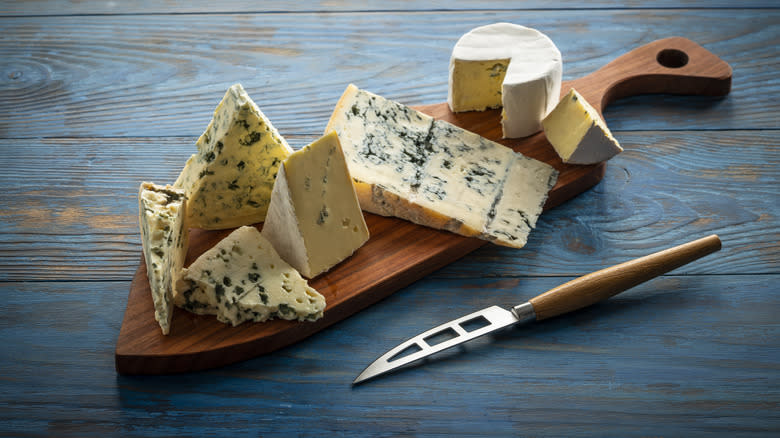
If you're a big fan of charcuterie or host a lot of parties, having a cheese knife or two on hand is likely worth it. However, these knives are not for everyone. "[This knife is] designed to handle different types of cheese, from soft to hard, without sticking or breaking the slices,' Maggie Turansky told us, mentioning that it has "limited use outside of cheese-related tasks. So it's nice for cheese enthusiasts, but not a necessity for casual cheese consumers."
If you love hosting parties, having a cheese knife isn't just useful for cutting cheese. Its presence can also add a touch of class to your cheese platter. A good quality cheese knife with a sleek design can really step up the look of your spread, making it look super appealing for your guests. So, whether you're having a cozy cheese and wine night or a fancy dinner party, investing in a cheese knife is a great way to make sure your presentation is top-notch. If you simply love cheese, having the correct knife to easily prepare it can make your life easier, too.
Kitchen Shears — Not Knives, But Still Useful For Some
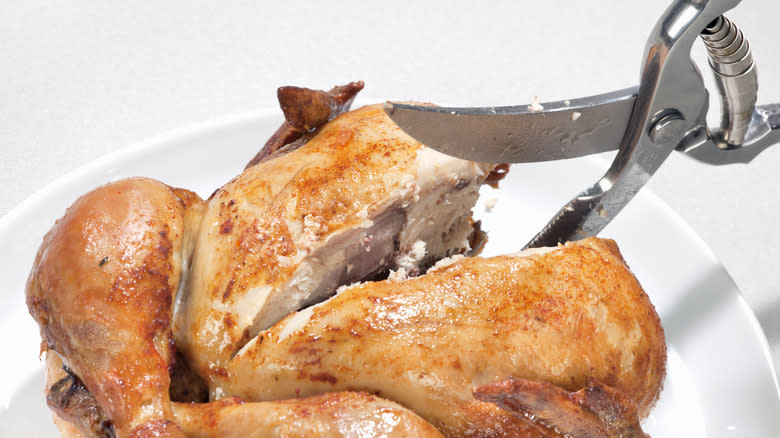
"If you're someone who frequently debones poultry (for instance, if you like removing the backbone to spatchcock a chicken), then a sturdy set of kitchen shears can also be welcome in a kitchen," Maggie Turansky shared. Spatchcocking a chicken is when you take out the backbone with scissors or a knife, and flatten it before cooking. This helps it to cook faster and more evenly. This method is great for grilling, roasting, or broiling chicken because it gives you crispy skin and juicy meat. It's a popular way to cook poultry because it helps everything cook just right! Knowing how to do this can really help you in the kitchen, as buying whole birds is often less expensive.
It's not a great idea to use kitchen scissors for meat and then use them for other things around the house, because you could risk spreading bacteria and contaminating your food. Bacteria from raw meat can also get on other surfaces or foods, so using kitchen scissors for non-food jobs can also spread germs and make you sick, and it might even mess up the scissors. So, to keep things safe, have separate scissors for meat and other tasks, and make sure to clean and sanitize them well every time you use them.
Read the original article on Daily Meal

